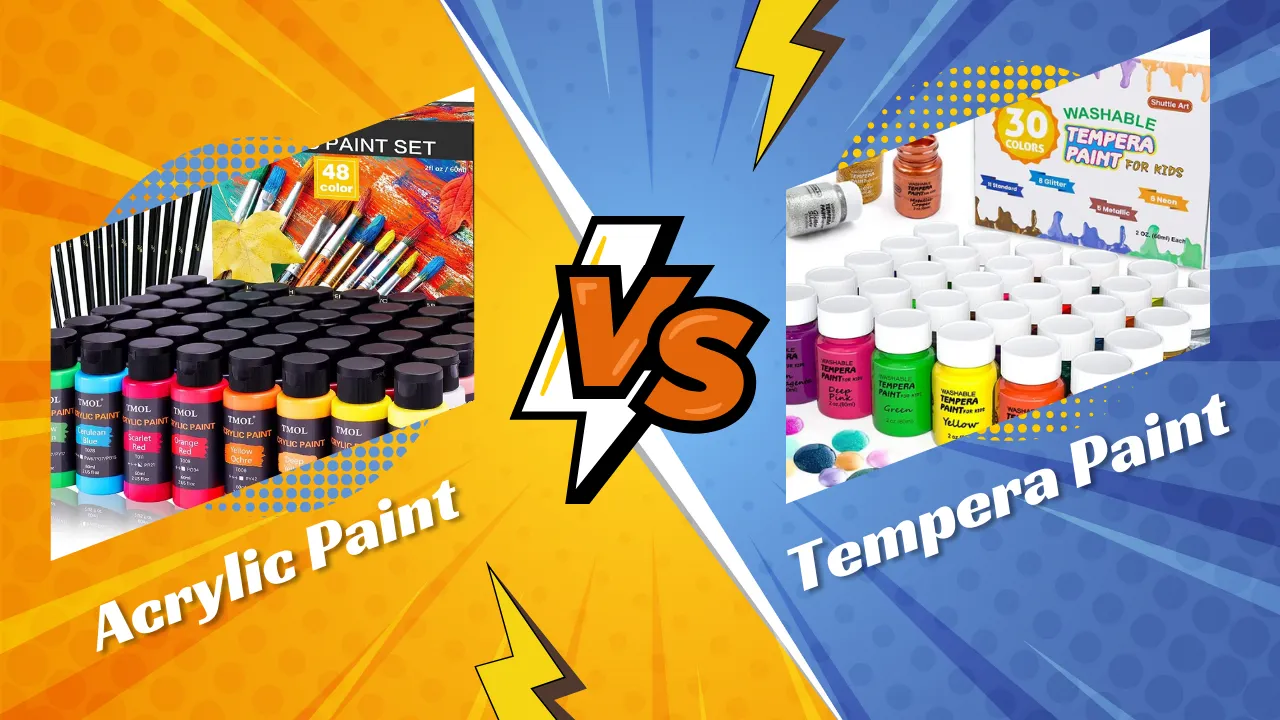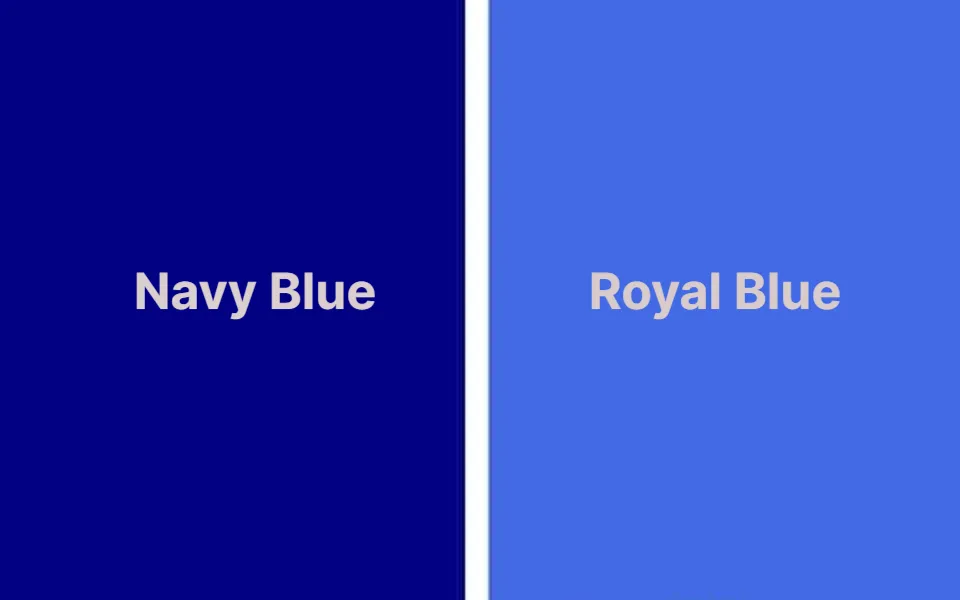Let’s get into both to find out what’s the difference between tempera vs. acrylic paint!
The main distinction is how long-lasting they are after drying. At most, tempera paint is semi-permanent because it can be cleaned up with water and reactivated. Acrylic paint, on the other hand, is known for its lightfast properties and permanently dries.
What is Tempera Paint?
The highly translucent, less permanent paint known as tempera is designed for use by students in their artistic endeavors. In general, they are non-toxic, allergen-free, and safe for kids over the age of 3. Water, pigments, calcium carbonate, starch, and cellulose are the main components of tempera.
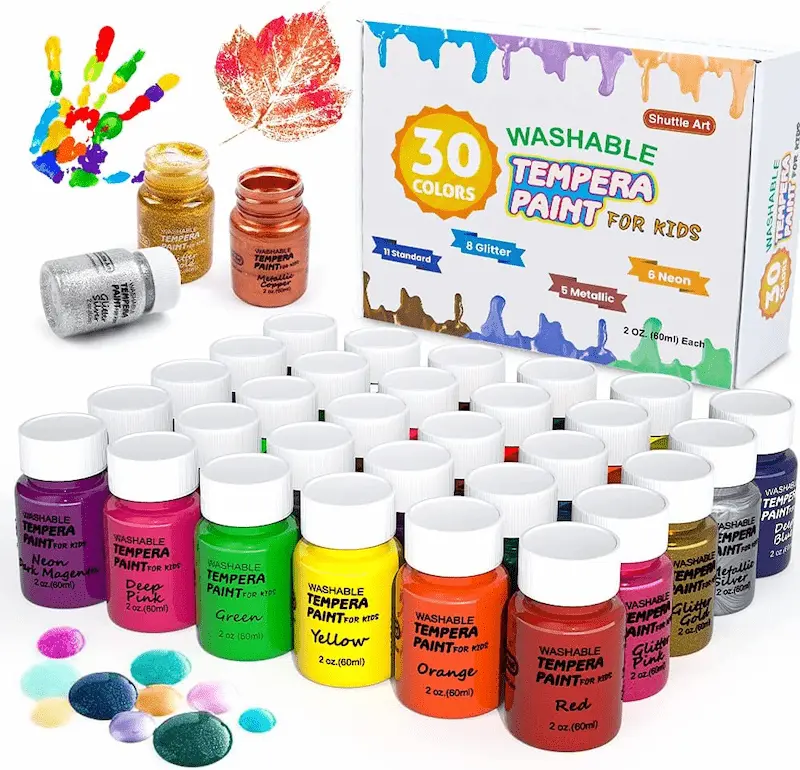
What is Acrylic Paint?
On canvas and for craft projects, acrylic paint is typically made for artists, students, and crafters. They quickly harden into a waterproof, durable plastic layer that can be applied to almost any surface. Acrylic polymer binder, filler, and additives are included in the ingredients.
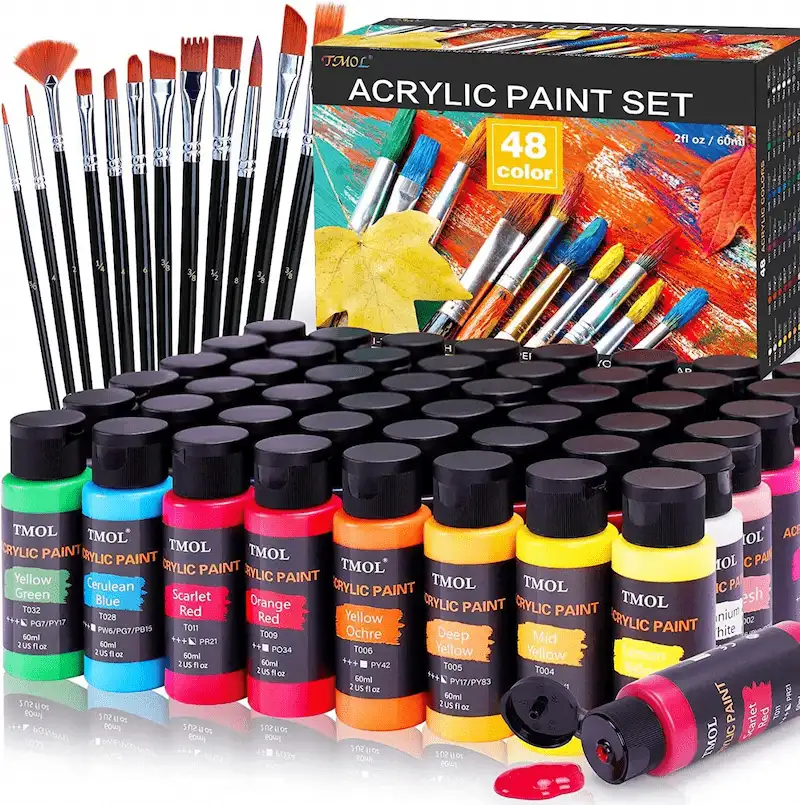
What is the Difference Between Acrylic and Tempera Paint?
Although the chart at the beginning of the article ought to provide you with some useful insights into how acrylic and tempera paint differ from one another, taking a closer look is advisable. You can then decide which paint is best for your subsequent project by learning more about how the two paints differ from one another.
The distinctions between acrylic and tempera paint are further explored here.
Composition
First off, the fact that both types of paint are water-based is their main point of similarity. From there, the only significant compositional differences between acrylic and tempera are numerous.
The food-based binder is what makes tempera paint so special. Egg yolk is the most widely used tempera paint binder. Tempera paint is sometimes referred to as egg tempera because it contains egg yolk.
Other binders for tempera paint were, however, tested by some artists. Egg white or an egg white and yolk mixture are two other frequently used binders. A water-miscible or soluble protein is frequently used by artists to bind the pigments in tempera paint. Casein, which is a milk-based protein, is an illustration of a water-soluble protein used as a binder in tempera paint.
There is a new tempera available that is typically referred to as poster paint. Poster paint uses a glue-based binder in place of a protein-based binder derived from food. Kids use these paints to create artwork with their fingers.
On the other hand, acrylic paint uses a gum arabic binder and a synthetic polymer compound. Acrylic paint’s flexibility and durability come from the union of the polymer compound and gum arabic binder.
Permanence
The longevity of acrylic paint and tempera paint may be the performance difference that makes the biggest difference.
Despite being water-based, the two types of paint are not the same and cannot dissolve in water. Even after it has dried, tempera paint can be removed. Acrylic paint is NOT soluble after it dries, which is contrary to other types of paint.
It’s simpler to scrub off tempera paint. Because it can be cleaned with a brush and some water, it is a common choice for finger painting. On the other hand, acrylic paint will endure for many years, particularly if it is properly sealed..
Suggested reading: One of the best ways to quickly improve the appearance and ambiance of a space where you probably spend a lot of time is by updating your kitchen cabinets. So, how much does it cost to paint kitchen cabinets?
Durability
Tempera performs better than acrylic in terms of durability. Once dried, the majority of tempera paints geared toward crafts are simple to scrape off a surface, making it possible for the paint to fade away quickly even with light contact. Acrylic is incredibly resilient in comparison. Scratching off surfaces that can withstand normal wear and tear is difficult.
It’s important to remember that egg tempera paints made for professional use are much more resilient than the craft-oriented varieties that are more frequently used. It still isn’t as durable as acrylic, though. When dry, it can be scraped off, but it does require some work.
Dry Time
When comparing acrylic and tempera paint’s drying times, they are fairly comparable. The quickest time between just 5 minutes belongs to tempera paint, which comes out slightly ahead. However, acrylic might be dry in as little as 20 minutes. Additionally, it could take a little longer for the paint to completely dry depending on the circumstances and other factors, though typically not more than one or two.
Opacity
The acrylic vs. glass winner in terms of opacity is: tempera paint debate is tempera. Calcium carbonate, which is present in chalk, is a component of this craft paint. This makes tempera paint capable of offering superior coverage and opacity, particularly in a single pass.
But that doesn’t mean acrylic can’t achieve good opacity. Unless you’re using very little paint or a delicate touch, it typically provides adequate coverage in a single pass. Nevertheless, using tempera paint makes getting a perfect coverage much simpler.
Washability
Since acrylic and tempera paints are water-based, they are simple to clean up even when completely damp or wet. Errant drips are usually easy to deal with. Moreover, immediately following use, brush cleanup might only call for a little water and hand labor.
Things modify slightly once the paint dries. Even when completely dry, craft-level tempera paint can be washed. Usually, using water and some elbow grease, you can get rid of it from any kind of surface. However, there is a chance that some pigments could stain underlying materials, particularly if the paint is left in place for a long time or the material is porous.
It is more difficult to remove dried acrylic paint. To remove dried acrylic paint from brushes, you might need to use rubbing alcohol, acetone, or vinegar. The same is true if you’re attempting to get acrylic paint off of surfaces, flooring, or other places where it spilled while you were working on your project.
As with the other type of tempera paint, professional-grade egg tempera isn’t as easily washable. Being a water-based paint, it can be easily cleaned up when wet. When it dries, though, its washability resembles acrylic more.
Lightfastness
Regarding paint, lightfastness is not the same thing as permanence. The key to permanence is how simple it is to remove the paint; in the case of tempera, this is accomplished with just a little water. The paint’s ability to maintain its color after being exposed to light is known as lightfastness.
The acrylic paint is more lightfast than the tempera paint. Acrylic paint has more lightfast pigment, which means it will keep its original color for a long time. While tempera paint retains its color and vibrancy for a short time after painting, it quickly loses both.
For artwork that you want to last a long time, lightfastness is crucial. I advise using acrylic if the painting needs to last for many years or even decades.
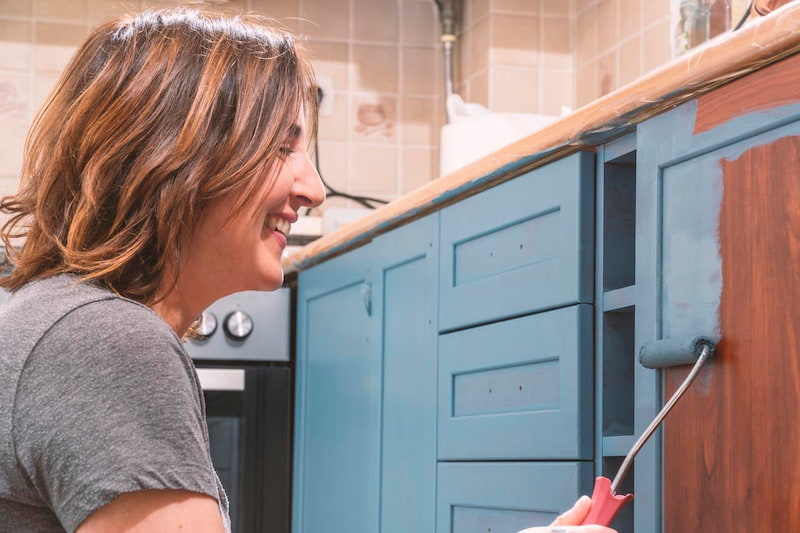
Consistency
It is true that the consistency of acrylic and tempera paints differs. A glob of acrylic paint may maintain its shape for a long time because it is typically quite thick.
Tempera paint is more fluid. The working consistency would be described as creamy by most people. A glob will usually spread, sometimes quite quickly, if it is left.
Texture
Paints with different drying times include tempera and acrylic. You can achieve a matte-looking and -feeling finish using tempera. When dry, there is a slight, undetectable grab when you run your finger across it. While large globs of tempera paint will produce a slight rise, tempera paint also tends to stay relatively flat.
With acrylic paint, the finished product has a plastic-like appearance. Usually in the semi-glossy to glossy range, the finish is reasonably smooth to the touch. It is also extremely buildable thanks to its stiffness.
Mixability
Here’s a comparison between acrylic and tempera that shows how evenly matched the two mediums are. Overall, mixability shouldn’t be a problem because both types of paint easily combine with shades of the same kind.
The most popular method of hand mixing is with acrylic and tempera paints. Given the thickness of acrylics, using a palette knife might be your best option. Combining colors with a stiff brush in a bowl may work with tempera because it is creamier. Just be careful not to drag the brush across the bottom or allow the paint to get too far up into the bristles as this can harm the brush.
Cost
For entry-level and intermediate products, there isn’t much of a price difference between acrylic paint and tempera paint. Both are typically reasonably priced, though, in most situations.
Depending on the product line, 8 to 16 ounce individual bottles typically cost between $2 and $8 each. In many cases, the price of paint sets ranges from $8 to $70, depending on the number of bottles, the choice of colors, and the sizes of the bottles.
The price increases significantly once you begin using professional-grade paints. For just 5 ounces of paint, a single bottle of premium acrylics can easily cost more than $40. Prices for professional-grade egg tempera may start at around $11, though some may cost well over $100.
Application / Uses
Acrylic paint typically resembles traditional artist’s paint more closely. It is a versatile option that works well on a variety of surfaces, including paper, wood, ceramic, canvas, metal, and fabric.
Craft tempera paint works best on paper products, such as poster board, paper mache, and comparable alternatives. Though it might not be the best option, you could technically use it on wood, glass, or other materials.
Egg tempera paint can be applied similarly to other premium artist paints, such as acrylic. Because of this, it is a little more adaptable than the typical craft version.
Is Tempera Paint Acrylic?
Acrylic is not the same as tempera paint. Even though both paints are water-based and may contain comparable pigments, the rest of their distinctive compositions are different.
Unlike craft tempera paint, which uses different binders and polymers, acrylic paints have these components. Additionally, egg tempera paint lacks the same polymers found in acrylics even though gums can be added for better dispersion.
Can You Mix Tempera and Acrylic Paint?
In general, you shouldn’t mix acrylic and tempera paint even though they are both water-based. The polymers and binders in acrylic might not get along with the calcium carbonate, egg, or milk products in tempera.
The final consistency and color blending may not be perfect due to the paint’s varied chemical composition. Because of this, it is best to only mix acrylic and tempera together.
Additionally, only similar types of tempera paint should be mixed together. Combine only those types of paints with craft tempera paints. The same is true for milk-based tempera paint and egg tempera paint.
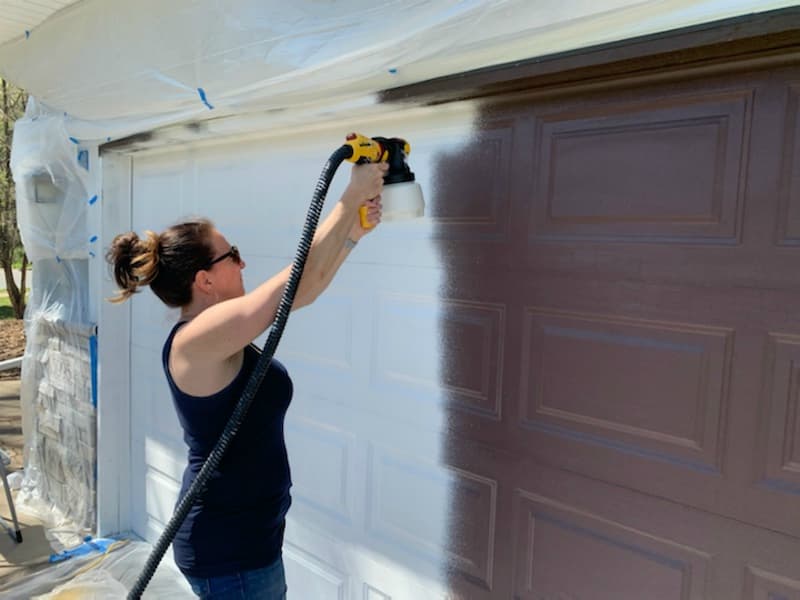
When Should You Use?
Acrylic Paint is Best Used On:
- Paper
- Wood
- Canvas
- Metal
- Fabric
- Ceramic
Tempera Paint is Best Used On:
- Paper
- Newspaper Print
- Cardboard
- Papier-Mâché
- Poster Boards
- Finger and Sponge Painting
Tempera Vs. Acrylic: Which One Should You Use?
The medium you select ultimately—or rather, at the start of your creative process—depends on the surface you’re working on as well as the degree of permanence you desire.
As well as finger painting and papier-mâché, tempera paint can be used on a variety of craft projects. The easy-to-use and widely available acrylic paint, on the other hand, is a good medium for painting on canvas or paper. If you don’t mind getting your hands dirty, acrylic pouring is another really enjoyable project you can start.
Due to its non-toxic composition and use of food-grade or organic ingredients, tempera paint is a favorite among many artists and educators when working with children. the advantage of being simple to wash off or wipe off surfaces. Using water to reactivate tempera paint is another option.
Additionally, there are acrylic paints on the market that are non-toxic. The use of acrylic paint over tempera paint is advised if you want your artwork to last for a long time. The acrylic paint’s polymer keeps it flexible even after drying, preventing cracking in your work. It also resists fading over time and is more lightfast.
Whatever you decide, please keep us updated as you continue on your creative path! What kind of media do you like best? Share with us in the comments section below.
